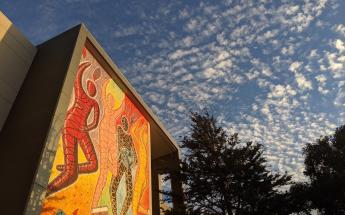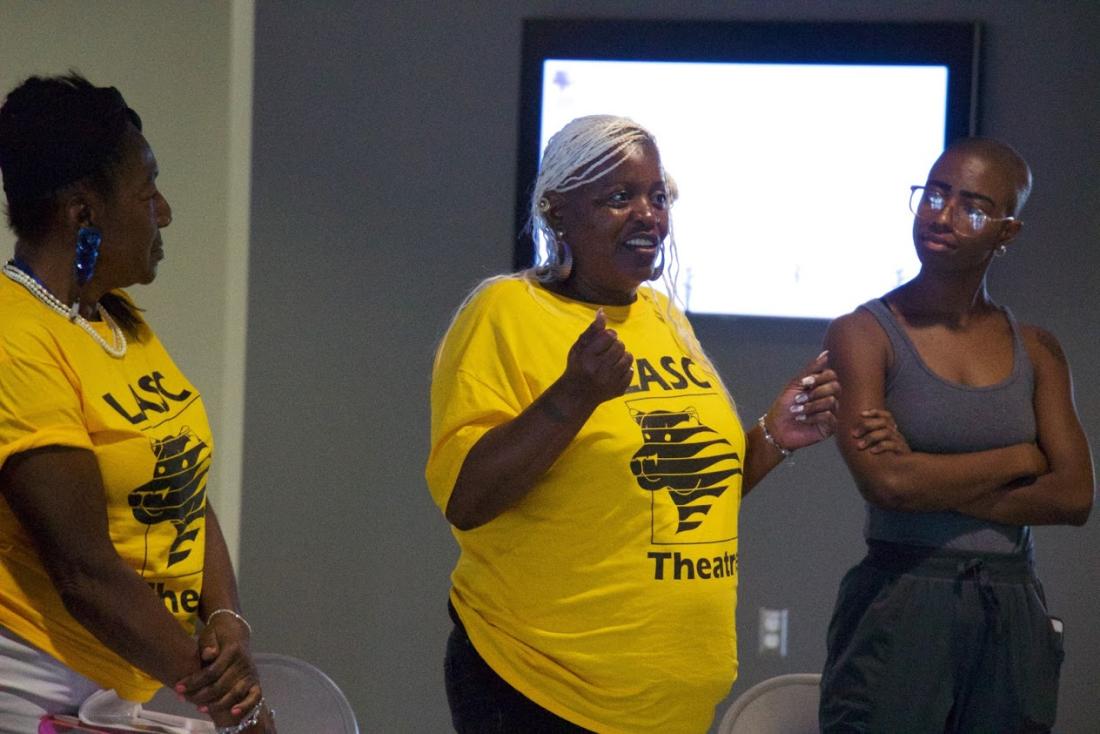Music (AA)
Careers in Music
Today’s musicians work in a variety of fields as performers in the spotlight, behind the scenes, or training and teaching others a love for music. While performing and teaching are two of the most common careers music, these alone don’t begin to cover the career options available to you upon graduation.
Here are some careers and their salaries you could have with a Music degree:
Career information below taken from bls.gov February 2020. Go to bls.gov for most current career information.
Play one or more musical instruments or sing. May perform on stage, for on-air broadcasting, or for sound or video recording.
National data
| Typical Education Level: | Salary: | Hourly Median Wage: |
|---|---|---|
| High school or equivalent | $58,552/year | $28.15/hour |
| Work Experience in a Related Occupation: | Job Outlook 2018-2028: | Number of Jobs 2018: |
| None needed | 0% increase (little to no change) | 187,600 |
Express ideas and portray characters in theater, film, television, and other performing arts media.
National data
| Typical Education Level: | Salary: | Hourly Median Wage: |
|---|---|---|
| High school or equivalent | $36,480/year | $17.54/hour |
| Work Experience in a Related Occupation: | Job Outlook 2018-2028: | Number of Jobs 2018: |
| None needed | 1% increase (little to no change) | 64,500 |
Lead musical groups like orchestras and choirs. Select music to perform, arrange performance and work with other musicians to ensure they perform well. May be responsible for administrative details of leading a musical group.
Data for Los Angeles/Long Beach/Anaheim
| Typical Education Level: | Salary: | Hourly Median Wage: |
|---|---|---|
| Bachelor’s Degree | $62,300/year | $29.95/hour |
| Work Experience in a Related Occupation: | Job Outlook 2018-2028: | Number of Jobs 2018: |
| Less than 5 years | 4% increase (as fast as average) | 420 |
Work with a licensed teacher to give student additional attention and instruction.
Data for Los Angeles/Long Beach/Anaheim
| Typical Education Level: | Salary: | Hourly Median Wage: |
|---|---|---|
| Postsecondary non-degree award | $36,460/year | N/A |
| Work Experience in a Related Occupation: | Job Outlook 2018-2028: | Number of Jobs 2018: |
| None needed | 5% increase (as fast as average) | 52,700 |
Operate machines and equipment to record, synchronize, mix, or reproduce music, voices, or sound effects in sporting arenas, theater productions, recording studios, or movie and video productions.
National data
| Typical Education Level: | Salary: | Hourly Median Wage: |
|---|---|---|
| Some college | $63,500/year | $30.53/hour |
| Work Experience in a Related Occupation: | Job Outlook 2018-2028: | Number of Jobs 2018: |
| None needed | 6% increase (as fast as average) | 13,510 |
What You’ll Learn at LASC in Music
You can get an Associate in Arts (AA) degree through LASC’s Music program where you will enhance your musical talents, dive into the fundamentals of music, and prepare for a career in this creative field:
- Improve your skills in reading and writing music through studying pitch, notation, rhythm, scales, intervals, chords, and the keyboard while increasing your knowledge of musical works to learn to comment on musical characteristics, genre, form, social significance, historical context and production methods.
- Increase your knowledge in American, World, and Western Classical music by learning oral and written traditions of basic music.
- Embrace new technology and learn desktop production basics, how to manipulate digital audio, drum programming, computer-assisted live performance, mixing, mastering, and distribution through digital audio production and performance work using Ableton Live software.
- LASC provides internships so you can build your career connections and create community ties for after you graduate.
- Want to transfer? With your Associate in Arts in Music (AA) degree, you will save money on your first two years of college learning from resourceful, passionate faculty before you transfer to a four-year college or university. Visit your academic counselor to fund out more!
Degrees & Courses You Will Take
Review LASC’s Associate in Arts in Music (AA) degree below, along with our suggested course of study for this program. Go to LASC’s current Course Catalog for specific course information:
Major Code: 1004.00
Total Units Required: 60
Upon successfully completing this program, you should be able to:
- Accurately (90%) analyze diatonic chord progressions using roman numerals.
- Aurally recognize musical works and comment appropriately on musical characteristics, genre, form, social significance, historical context and production methods.
- Identify and perform with proper fingering the major and minor scales and diatonic chord progressions.
| Required Courses: | Units |
|---|---|
| MUSIC 101 Fundamentals of Music | 3 |
| MUSIC 111 Music Appreciation I | 3 |
| MUSIC 321 Elementary Piano I | 2 |
| MUSIC 322 Elementary Piano II | 2 |
| MUSIC 323 Elementary Piano III | 2 |
| OR | |
| MUSIC 411 Elementary Vocal III | 2 |
| MUSIC 412 Elementary Voice | 2 |
| MUSIC 413 Elementary Voice II | 2 |
| PLUS 8 units from Recommended Electives | |
| MUSIC 216-1 Harmony 1 | 3 |
| MUSIC 216-2 Harmony 2 | 3 |
| MUSIC 323 Elementary Piano III | 2 |
| MUSIC 324 Elementary Piano IV | 2 |
| MUSIC 413 Elementary Voice III | 2 |
| MUSIC 414 Elementary Voice IV | 2 |
| TOTAL UNITS | 24 |
Get Ready Before You Start
Interested in a career in music? Before your first class at LASC, you can start preparing for your career in music:
Program Learning Outcomes

As a student, once you successfully complete the program, you should be able to:
- Accurately (90%) analyze diatonic chord progressions using roman numerals.
- Aurally recognize musical works and comment appropriately on musical characteristics, genre, form, social significance, historical context and production methods.
- Identify and perform with proper fingering the major and minor scales and diatonic chord progressions.
